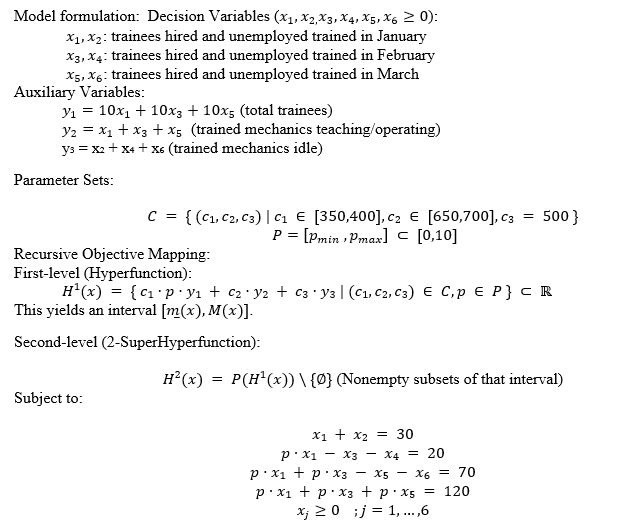A Linear Mathematical Model of the Vocational Training Problem in a Company Using Neutrosophic Logic, Hyperfunctions, and SuperHyperFunction
Keywords:
Linear programming; linear models; neutrosophics logic; neutrosophic linear models; hyperfunction; the issue of corporate vocational training.Abstract
A mathematical model is a simplified representation of a practical, real-life system or a proposed idea
for an executable system. Operations research methods have the ability to express the concepts of
efficiency and scarcity in a well-defined mathematical model for a given situation. Scientific methods
are used to solve complex problems in managing large systems in factories, institutions, and
companies, enabling them to make optimal scientific decisions for their operation. Mathematical
models consist of an objective function, through which we search for the maximum or minimum value,
and constraints. If the objective function and the constraints are all linear relationships, we obtain a
linear mathematical model. Linear programming is one of the most important methods of operations
research due to its widespread use in most areas of life. When constructing a mathematical model, we
rely on data collected by experts on the issue under study. This data is affected by the surrounding
conditions. In light of the constant changes and instability of these conditions, this data is uncertain
and subject to change depending on the circumstances. To develop a mathematical model that
accommodates all possible circumstances, this research reformulates the vocational training problem
within a company using the concepts of neutrosophic logic, along with the definitions of
hyperfunctions and SuperHyperFunction.
Downloads

Downloads
Published
Issue
Section
License
Copyright (c) 2025 Neutrosophic Sets and Systems

This work is licensed under a Creative Commons Attribution 4.0 International License.







